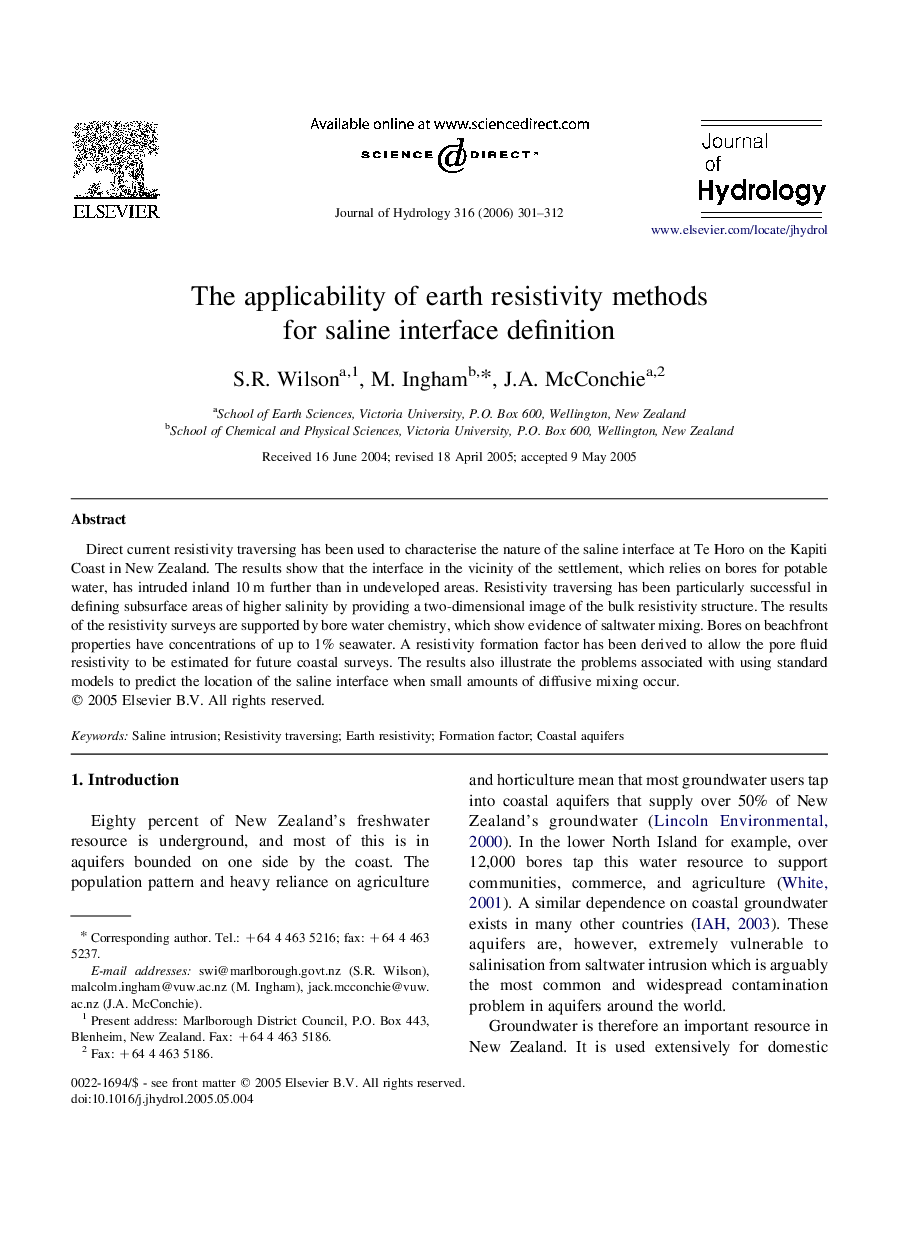| Article ID | Journal | Published Year | Pages | File Type |
|---|---|---|---|---|
| 4580911 | Journal of Hydrology | 2006 | 12 Pages |
Direct current resistivity traversing has been used to characterise the nature of the saline interface at Te Horo on the Kapiti Coast in New Zealand. The results show that the interface in the vicinity of the settlement, which relies on bores for potable water, has intruded inland 10 m further than in undeveloped areas. Resistivity traversing has been particularly successful in defining subsurface areas of higher salinity by providing a two-dimensional image of the bulk resistivity structure. The results of the resistivity surveys are supported by bore water chemistry, which show evidence of saltwater mixing. Bores on beachfront properties have concentrations of up to 1% seawater. A resistivity formation factor has been derived to allow the pore fluid resistivity to be estimated for future coastal surveys. The results also illustrate the problems associated with using standard models to predict the location of the saline interface when small amounts of diffusive mixing occur.
